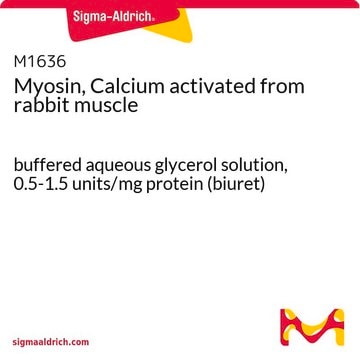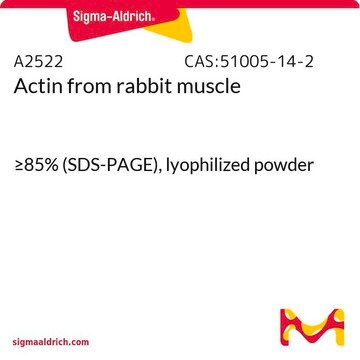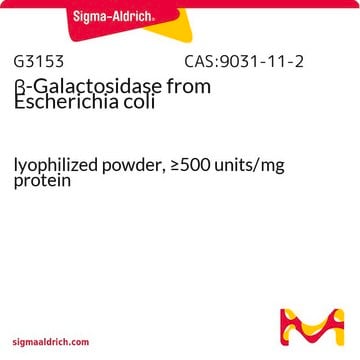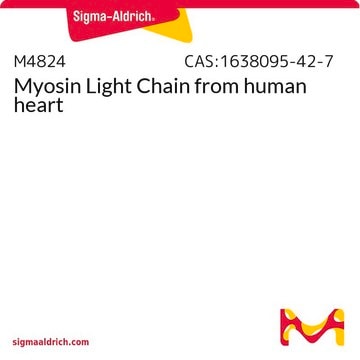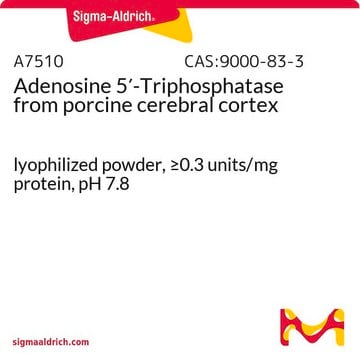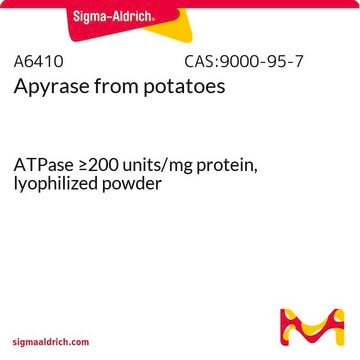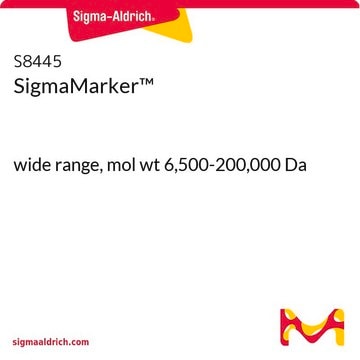M0531
Myosin, Calcium activated from porcine heart
buffered aqueous glycerol solution, 0.1-0.5 units/mg protein (biuret)
Sinónimos:
Calcium-Activated Myosin, Myosin from Porcine Heart, Porcine Heart Myosin
About This Item
Productos recomendados
origen biológico
Porcine heart
formulario
buffered aqueous glycerol solution
actividad específica
0.1-0.5 units/mg protein (biuret)
mol peso
heavy chain ~200 kDa (each)
light chain 15-20 kDa (each)
~480 kDa
concentración
≥1.0 mg protein/mL Biuret
color
hazy colorless to light yellow
Nº de acceso UniProt
Condiciones de envío
wet ice
temp. de almacenamiento
−20°C
Información sobre el gen
pig ... MYHC(396711)
Descripción general
Aplicación
Acciones bioquímicas o fisiológicas
Definición de unidad
Forma física
Código de clase de almacenamiento
10 - Combustible liquids
Clase de riesgo para el agua (WGK)
WGK 2
Punto de inflamabilidad (°F)
Not applicable
Punto de inflamabilidad (°C)
Not applicable
Certificados de análisis (COA)
Busque Certificados de análisis (COA) introduciendo el número de lote del producto. Los números de lote se encuentran en la etiqueta del producto después de las palabras «Lot» o «Batch»
¿Ya tiene este producto?
Encuentre la documentación para los productos que ha comprado recientemente en la Biblioteca de documentos.
Los clientes también vieron
Therapy on Autoimmune Giant Cell Myocarditis
Concomitant Suppression of the Expression of Dendritic Cells
Artículos
Myosins are a family of ATP-dependent motor proteins. Myosin II is the major contractile protein involved in eukaryotic muscle contraction by “walking” along actin microfilaments of the sarcomere
Nuestro equipo de científicos tiene experiencia en todas las áreas de investigación: Ciencias de la vida, Ciencia de los materiales, Síntesis química, Cromatografía, Analítica y muchas otras.
Póngase en contacto con el Servicio técnico